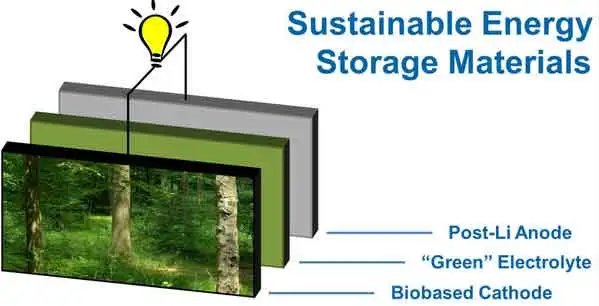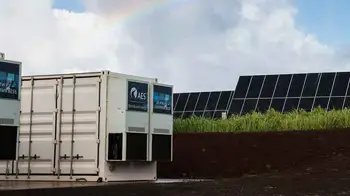Energy Storage Materials
By Howard Williams, Assocaite Editor

Battery Energy Storage Testing and Maintenance for Solar PV Systems
Our customized live online or in‑person group training can be delivered to your staff at your location.

- Live Online
- 12 hours Instructor-led
- Group Training Available
Download Our OSHA 4474 Fact Sheet – Establishing Boundaries Around Arc Flash Hazards

- Understand the difference between arc flash and electric shock boundaries
- Learn who may cross each boundary and under what conditions
- Apply voltage-based rules for safer approach distances
Energy storage materials enable efficient storage and release of electrical energy in batteries, capacitors, and renewable systems. They enhance performance, sustainability, and reliability in modern energy technologies.
What are Energy storage materials?
Energy storage materials are critical components of energy storage systems (ESS) that enable the efficient use of renewable energy sources.
✅ Improve energy density and system efficiency
✅ Support renewable integration and grid reliability
✅ Enable advanced batteries and capacitors
With the advent of innovative technologies, the electrical industry sector is shifting towards using sustainable materials for ES. Through research and development, the potential of materials is being unlocked, and as a result, these materials are becoming more efficient, sustainable, and safer. As a result, the future of new materials looks promising, and their continued development will play a crucial role in shaping the power landscape of the future.
Materials play a vital role in developing renewable power sources. They offer a way to store excess power when generated and use it when needed, making them essential to the growth in utility-scale energy storage
Types of Energy Storage Materials
Different materials bring unique advantages to ESS. Traditional and emerging technologies include:
Batteries
Lithium-ion remains the most common, valued for its high energy density and efficiency. Alternatives such as sodium-ion and solid-state batteries are advancing rapidly, offering greater safety and sustainability. These systems rely on electrodes, separators, and electrolytes to store and deliver power. To learn more, see our resource on battery energy storage systems.
Supercapacitors
Supercapacitors store energy in electric fields rather than chemical reactions, allowing them to charge and discharge much faster than batteries. Although they store less energy overall, their speed and durability make them essential for applications that require rapid power delivery.
Test Your Knowledge About Energy Storage!
Think you know Energy Storage? Take our quick, interactive quiz and test your knowledge in minutes.
- Instantly see your results and score
- Identify strengths and areas for improvement
- Challenge yourself on real-world electrical topics
Flow Batteries
Redox flow batteries use liquid electrolytes to store energy. They can scale to large capacities and offer long lifespans, making them ideal for grid-level storage. Vanadium-based systems are already being deployed worldwide to support the integration of renewable energy sources.
Thermal and Organic Materials
Phase-change and carbon-based materials represent promising alternatives. They are abundant, inexpensive, and non-toxic, with the potential for higher safety and longer lifecycles. Thermal energy storage, such as sand batteries and phase-change materials, also provides seasonal storage for renewable-heavy grids.
Mechanical Storage
Advanced flywheel energy storage relies on durable materials that can withstand high-speed rotation and repeated charging cycles, making them a reliable complement to chemical and thermal systems.
Large-scale compressed air energy storage is another example of how material science supports long-duration applications.
Performance Factors
The effectiveness of storage materials depends on several key properties:
-
Energy density: the amount of power stored per unit of mass or volume.
-
Power density: the speed of charging and discharging.
-
Cycle life: the number of charge and discharge cycles before performance declines.
-
Safety: critical to handling and deployment, as some high-density systems can be hazardous if damaged.
Balancing these factors is at the core of current research and innovation.
Advances and Innovations
Recent progress in energy storage materials has been remarkable. Solid-state batteries replace liquid electrolytes with solid materials, thereby improving safety and performance. Nanomaterials offer unique structural properties that enhance conductivity, durability, and storage capacity. Geochemical and thermal systems, including underground and sand-based designs, are emerging as scalable, sustainable alternatives.
These innovations aim not only to outperform traditional technologies but also to minimize environmental impact and expand their applications across various industries.
Challenges in Development
Creating new storage materials requires balancing efficiency, safety, cost, and sustainability. High-power-density designs often trade off against safety, while environmentally friendly materials may not yet match the efficiency of conventional options. Researchers are addressing these challenges through advanced chemistry, materials science, and engineering, seeking breakthroughs that align performance with environmental responsibility.
Applications Across Industries
Energy storage materials have diverse applications:
-
Electric Power Grids: Improve stability and reliability by balancing supply and demand. See how energy storage and the grid are connected.
-
Transportation: Power electric vehicles and hybrids, cutting emissions and fuel consumption.
-
Remote and Off-Grid Areas: Delivering Reliable Electricity in Areas with Limited Infrastructure.
These applications highlight the crucial role of storage materials in both everyday use and the development of future electrical systems.
The Future of Energy Storage Materials
The outlook for energy storage materials is bright. Continued research and development promise systems that are safer, more efficient, and more sustainable. Solid-state and organic options could redefine the next generation of ESS, while large-scale deployments of flow and thermal storage are already reshaping renewable integration.
As renewable power expands, the role of advanced materials will become increasingly important. By unlocking higher capacity, longer life, and lower costs, these innovations will shape the transition to a more sustainable global electric power landscape.
Related Articles








